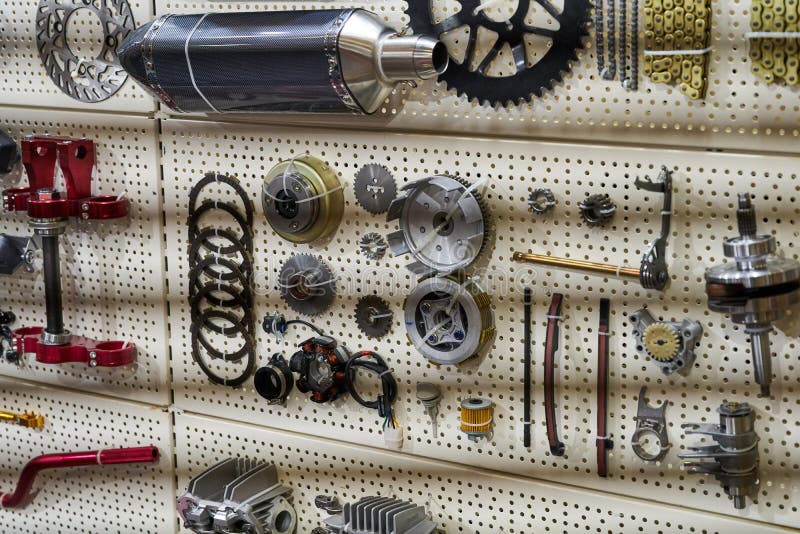Understanding Motorbike Gears: How to Maximize Your Riding Experience
In the world of motorcycling, understanding the art of equipment manipulation is critical for enhancing your riding efficiency. Correctly using and recognizing bike gears can substantially impact gas, control, and acceleration efficiency, changing an average ride right into a seamless, exhilarating trip.
Understanding Equipment Mechanics
How do the details of gear mechanics affect motorcycle efficiency? At the core of bike characteristics, equipment technicians play a critical role in converting engine power into motion, eventually determining speed and control. Gears, thoroughly crafted components, permit motorcyclists to enhance torque and speed, making sure a seamless shift with various terrains and rates. The gear proportions, very carefully designed, establish the partnership between engine transformations and wheel turns, impacting acceleration and gas efficiency.
Recognizing gear technicians starts with acknowledging the relevance of the gearbox, which houses several gears of varying sizes. These gears connect via a process called meshing, where teeth of different gears involve to send power. The precision of this interaction is critical; any kind of imbalance or damages can result in ineffective power transfer, preventing performance. Additionally, the setup and dimension of gears affect the bike's capability to take care of different tons and rates.
Furthermore, the principle of gear moving is integral to making best use of efficiency. Timely and smooth changes make sure that the engine runs within its optimal power band, avoiding unneeded stress and boosting durability (mx parts nz). By understanding these mechanical ins and outs, motorcyclists can accomplish an unified mix of power, control, and performance, raising their riding experience
Timing Your Changes
Shift timing proficiency is crucial for enhancing motorcycle performance and boosting the riding experience. Effectively timed changes guarantee that the engine runs within its ideal power band, which is crucial for keeping control, attaining smooth acceleration, and making sure the durability of the motorcycle. Motorcyclists should create an user-friendly feeling of when to change equipments, which entails recognizing the relationship between engine transformations per min (RPM) and rate.
To master shift timing, pay close focus to the engine's sound and feel, as these give essential hints about when to alter gears. The suitable change point commonly happens when the engine approaches the top array of its power band without reaching the redline. Changing prematurely can cause a lack of power, while moving far too late may create unneeded engine strain
In addition, roadway conditions and riding design influence shift timing. In contrast, during highway riding, fewer changes at higher rates can be more ideal.
Enhancing Gas Effectiveness
While grasping motorcycle gears is important for performance, boosting fuel performance is equally important for both financial and environmental factors. Optimum fuel usage not only minimizes operational costs but additionally reduces the ecological footprint of riding. To achieve this, one need to recognize the complex relationship between gear choice and engine efficiency.
Firstly, selecting the best equipment at proper speeds can substantially influence fuel usage. Riding in a higher equipment at lower rates can bring about engine lugging, which is harmful to both fuel economy and engine wellness. Alternatively, riding in reduced gears at high speeds causes unneeded fuel consumption. Therefore, keeping an optimum equilibrium by changing gears in alignment with road conditions and prepared for maneuvers is necessary.
Furthermore, regular upkeep plays a critical function in fuel performance. Making sure that the motorcycle is well-tuned, with tidy air filters and appropriately inflated tires, can decrease and enhance aerodynamics gas waste. Adopting a riding design that embraces gradual acceleration and smooth deceleration can add to much better gas economic climate.

Methods for Smooth Transitions
Achieving smooth gear changes is fundamental to improving the riding experience and guaranteeing the longevity of a motorbike's transmission system. Correct gear changing not just contributes to a seamless experience but additionally lessens deterioration on the mechanical parts. To understand the art of smooth transitions, cyclists should concentrate on a few crucial methods.

Secondly, clutch control plays a pivotal role. Engaging and disengaging the clutch smoothly requires method. The clutch bar must be released progressively, allowing for a smooth transfer of power from the engine to the wheels without triggering a shock or abrupt activity.

Adjusting to Roadway Problems
Navigating diverse road conditions is a vital skill for any motorcyclist aiming to keep control and safety and security. Whether you're riding on damp surface areas, crushed rock roads, or navigating sharp turns, your ability to adjust your gear use and riding strategy is critical. Recognizing how to readjust your gears properly can dramatically influence traction and stability, guaranteeing a much safer trip.
On damp roads, it is advisable to preserve higher gears to lower torque and decrease wheel spin. This method assists keep grasp on unsafe surfaces, enabling for smoother velocity and deceleration. In contrast, when riding on gravel or uneven surface, reduced gears are preferable. Lower gears provide better control and enable you to react more quickly to unforeseen changes in the roadway surface.
Sharp curves require accurate gear administration to stabilize speed and control. Downshifting prior to entering a contour can aid maintain momentum while making certain the motorcycle stays secure throughout the turn. Constant method in diverse problems improves your ability to predict and respond to changes in roadway structure and incline.
Verdict
Understanding motorcycle equipments dramatically enhances the riding experience by boosting control, acceleration, and gas effectiveness. Adapting gear choice to various road problems, such as making use of higher equipments on wet surfaces and reduced gears on crushed rock, more enhances handling and security.
Recognizing equipment auto mechanics starts with recognizing the significance of the gearbox, which houses numerous gears of varying sizes. look these up These equipments interact via a procedure understood as meshing, where teeth of different equipments engage to send power (mx gear nz). Gentle modifications to the throttle throughout equipment shifts can stop jerky movements and maintain a constant riding rate
Whether you're riding on wet surface areas, crushed rock roadways, or browsing sharp turns, your capacity to adjust your equipment motorcycle gas tank cover use and riding method is paramount. Adjusting equipment selection to different roadway conditions, such as using greater gears on damp surface areas and lower equipments on crushed rock, more enhances handling and safety.